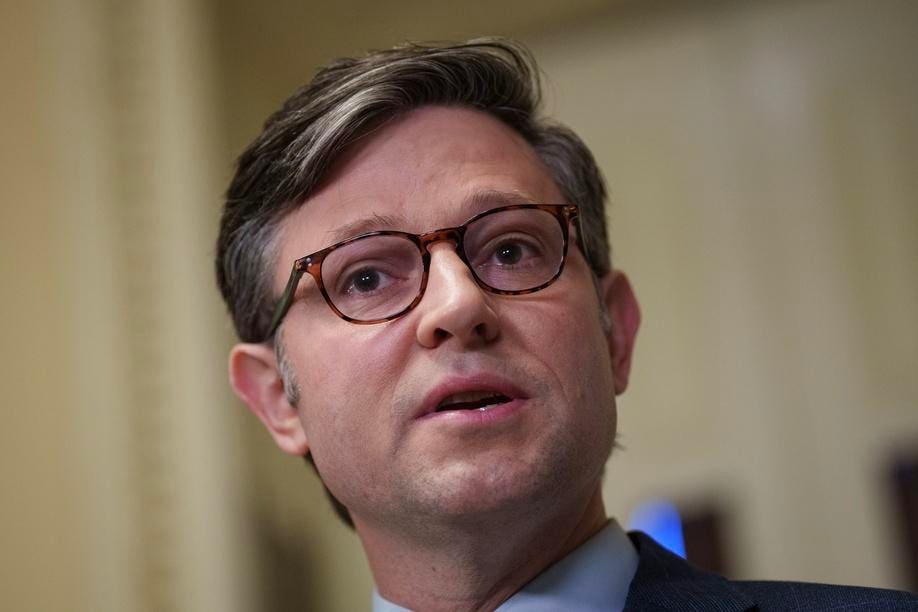Politicians have just days to avert a government shutdown, with the deadline coming at midnight on Friday, November 17. If a deal is not reached, then the U.S. will see a range of economic impacts that will increase in severity with the duration of any shutdown. That said, despite the tight timeline, the current expectation is that a government shutdown most likely is averted, or that any shutdown is brief.
The Impact Of Any Government Shutdown
A continuing resolution must be passed by the November 17 deadline. Under any shutdown, critical government services would continue to operate and government employees would see their pay delayed for the duration of a shutdown.
Many government functions including Social Security, Medicare, the U.S. Postal Service, law enforcement, the military, air traffic control, border security and others — would not be affected.
In some cases, this is because these functions are deemed critical. In others, because the department has a separate funding mechanism from the government’s annual budgeting process. However, despite these scenarios, there would be two main impacts from a potential shutdown and many other areas of government would cease or maintain skeletal operations.
The first is that although government employees would receive back pay once the shutdown ends, they would not receive pay during the shutdown itself. This is the case regardless of the government employees’ work status. The people who are required to work are called excepted employees, while those that are not required to work are furloughed. The outcome for government contractors is less clear, and here back pay is not necessarily guaranteed.
Any payment delay for hundreds of thousands of government employees can be extremely disruptive. However, this issue impacts only federal employees, not state and local government workers. This level of pay disruption is one reason why government shutdowns have historically been short. Shutdowns have historically been short, often lasting only hours or a handful of days. That said, the most recent government shutdown in from December 2028 to January 2019 was also the longest in history at 35 days.
Secondly, many non-critical government functions cease to operate during a shutdown. There is some limited discretion in assessing which government activities are critical and which are not at the Presidential level. This discretion can impact the disruption a shutdown causes.
However, for example, economic reporting, national parks, NASA and most government research functions see reduced operations during the length of any shutdown. Functions of government related to permitting, inspection and regulation would likely be reduced or suspended in many cases since these are typically deemed noncritical.
As such a government shutdown would delay pay for many workers while disrupting and delaying many government processes. It is notable that a government shutdown typically stops economic reporting from the government, making the impact of a shutdown harder to gauge.
The Timeline
Again, the current expectation is that a shutdown is avoided. There is a proposal pass a continuing resolutions and so, forecasting site Kalshi currently gives a 1 in 5 chance of a government shutdown . The risk of one is real, but a continuing resolution is viewed as most likely.
As of this writing, the latest proposal is that the House would pass two separate clean continuing resolutions to keep the government open. However, this approach, if successful, would create subsequent risk of a partial government shutdown for different government departments on January 19 or February 2, 2024. That’s because continuing resolutions to keep the government open typically roll forward the prior year’s budget for a period of weeks, rather than creating a full budget for the current fiscal year. So, a continuing resolution creates further deadlines rather than resolving the budgetary issue entirely.
That said, continuing resolutions are a common part of the U.S. budgeting process. A full budget virtually is never passed by the start of the government’s fiscal year in October. The use of continuing resolutions to fund the government is not unusual, though the brinkmanship involved in the current process is less common. It’s in part, a function of the current political gridlock between the Republican-controlled House and Democratic-controlled Senate, as well as very slim Republican majority in the House.
What’s Next?
The coming days will include tense negotiations to determine if a government shutdown can be avoided, likely via a pair of continuing resolutions for different departments.
The most probable outcome is a continuing resolution into 2024 that averts shutdown risk for now. However, that would create similar shutdown deadlines in early 2024. If not, then the economic disruption from any shutdown lasting more than a few days may weigh on the broader economy. If two separate continuing resolutions are passed, then the risk of a partial government shutdown, impacting some government departments but not others might become more likely in 2024.
Read the full article here


